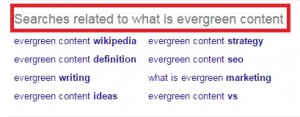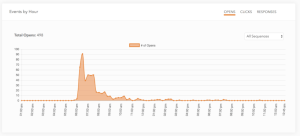Smarter is better. It always has been. In fact, you’re already smarter than most of the business owners just by finishing Beginners Guide to Google Search Console.
By now you’ve seen the data and play with it a bit on your own. And you know how daunting it could be when you are not quite sure what to make of the data.
That’s what today’s blog is about, how to read between the lines of data and turning that information into the goldmines for your business strategy. By the end of this post, it will shred off the some of the uncertainty you may have next time when you make a business decision.
We will be looking mainly at search traffic section because that’s where all the actions take place.

Without further ado. Shall we start?
Go ahead and open your Google search console, and follow along.
Using Google Web Master as Spam Checker
Method 1
Go to Search Traffic → Search Analytic
Glance over the list of queries, and see if there are any keywords that stick out like a sore thumb. Keywords like Viagra, porn, penis are some obvious examples that shouldn’t appear on your queries list. Well unless you run a porn site. With all the seriousness, if you have those keywords on your query list, it is a strong indicator that your site has been spammed.
Unfortunately, to clean up the Spam-filled website is much bigger project than having your site protected from spam. It may take up to six months to recover from spam attack. Talk to your SEO team and dev team for help to restore your site reputation with Google.
Method 2
Go to Search Traffic → Links to your site
A monthly check-up is recommended for site owners, because it’s much easier to do preventative measure than to recover from spam attack. That said, take a once over at Who links the most and see if there’s any abnormality in the urls. Urls like getlaidtonight.com are a good indicator that an inappropriate website that are linking back to your webpage.
The list of urls here should be relevant to your website, any irrelevant urls pointing back to you site is bad in the eye’s of Google.
Under How your data is linked is a list of anchor text people used to link to your site with. Anchor text is a keyword that people used to describe your page.
Anchor Text is the visible, clickable text in a hyperlink — moz
It is often in hyperlink form such as this links to Zlass home page.
For example, let’s say your website sells nothing but women shoes. If you see lots of irrelevant anchor texts being linked to your site then it’s another good indicator that your page is under SPAM attack.
Using Google WebMaster to improve your blog posts
Search traffic → Search Analytics, mark clicks, impressions, and pages (no filter)
If you run a personal blog or business blog, here’s a place where you have a high-level view of which posts are your best performers. By default, the pages are arranged in the order of popularity, the most popular being on top.
To scope in further, click to one of the links under pages. And you will see something like this:

Check on clicks, impressions, CTR, and position.
So the question now is, does this blog post needs improvement? For this, you need to look at the average position and average CTR for your blog post.

Benchmark based on average position in a search engine
In this example, the blog post is placed 15.7 that, translates to 2nd page on Google search result. Referring to the chart above, the average CTR for 2nd page is 3.99%. The blog post is currently at 3.12% that means that it needs some work.
To scope in even further, mark the radio button on Queries, with Pages filter to the blog post you are looking at.

Once selected, a list of queries will appear. These queries are the search termed users used that leads to your page. Look over the queries to get a sense if the users intention aligns with your blog post, meta descriptions, and title tag. If the a certain queries on this list has a great CTR(refer back the chart above to see what’s the benchmark for CTR), you can even implement that keyword phrase in optimize your blog post performance.
Using Google WebMaster to improve Click Through to your Site.
Search traffic → Search Analytics, go ahead and mark, clicks, impressions and queries (no filter)

Study your queries and compare the supposed CTR based on average position on Google search result. If a certain query performs below average, it means that your meta descriptions, title tag or rich snippet are not aligned with users’ intent. Make changes to those and come back a month later to check up on the result.
To compare the effectiveness of your changes, you can do a side to side comparison with the following set up :

Improvise. Check. Repeat.
And there you have it, real life uses to Google search console. No more staring blankly on the numbers and graphs, because now you know what to make of these data and device a plan to improve your business as a whole.
This is an ongoing process, and that’s what makes this online marketing so dynamic. You need to constantly tweak to see what works best for you and you repeat the process along with a monthly checkup. It’s a lot of work, but well worth it when you start seeing the trend going upward.
Until next time,
Improvise. check. and repeat.
Digital & Social Articles on Business 2 Community(42)
Report Post






